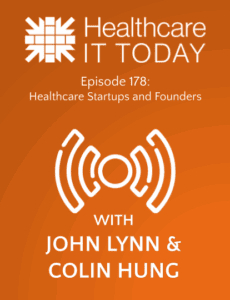The following is a guest article by Christy Bricker, CPHIMS, Vice President Strategic Services at MURJ
Effective management of patients with cardiac arrhythmias presents a unique challenge for healthcare providers. Beyond single acute care episodes, these patients require long-term medical monitoring for pacemakers and other Cardiac Implantable Electronic Devices (CIEDs).
Clinicians follow these patients for many years, whether in person or remotely. Comprehensive and consistent CIED monitoring ensures device safety, delivers continuity of care, and alerts clinicians to new clinical problems.
To achieve these goals efficiently while protecting patients, clinicians require ready access to historical clinical data. This is where legacy data and IT teams become indispensable partners.
The Imperative of High-Quality Legacy Data for Cardiac Device Teams
The traditional landscape of cardiac device monitoring often creates challenges for cardiac device clinic teams, including patchwork processes, overburdened staff, and financial inefficiencies. A significant contributor to these issues is the lack of accessible legacy data within new cardiac device management platforms. This gap in legacy data access and integration leads to several negative impacts:
- Disrupted Clinical Workflow: Electrophysiologists (EPs) and other clinicians experience disruptions in patient care workflows due to incomplete data
- Missing Historical Context: Clinicians lack essential historical test data for informed decision-making
- Manual Data Remediation: Staff often resort to manually cleaning patient data, frequently during patient encounters, which is inefficient and prone to error
- Wasted EP Time and Errors: Manual data entry consumes valuable clinical time and increases the risk of inadvertent errors
To mitigate these issues, legacy data must be thoroughly cleaned before CIED platform implementation, ideally not during a patient encounter.
Data Integrity During Data Transfer: Key Considerations for IT Teams
A major challenge in cardiac device management lies in the “unclean” nature of legacy data often housed within feeder systems (the original software platforms where device data was first entered). This can include erroneous or duplicate patient demographic data, device data, inconsistent clinical note formats, and more.
Automated cleaning and transfer of this data are essential; manual entry would consume hundreds of hours for the cardiac device team. Here are six specific insights for IT teams collaborating with cardiac device clinics during new CIED platform implementations:
Addressing Manual Entry Errors
Older systems heavily relied on manual entry for critical data like device serial numbers, leading to frequent errors. Device serial numbers typically range from eight to eleven digits, and many legacy systems lacked automated checks during data entry.
Navigating Proprietary Databases
Legacy systems often used proprietary databases with configurable structures, complicating data extraction and mapping. Cross-referencing legacy patient data with recent billing data (e.g., last device check within two years) can create a cleaner, more accurate patient list for the go-live.
Combining Technology with Manual Review
Effective transfer of on-premises device data to new platforms necessitates a combination of technology and significant manual review by human operators. This is crucial for accounting for variations in manual entries for device names and other fields. For instance, staff must manually clean data before import to ensure accuracy based on the first few characters of a serial number.
Revealing Patient Activity and Billing Inconsistencies
The cleanup process often reveals that clinics have fewer active patients than initially estimated; only 40-60% of listed patients may be truly active based on their last billed device check within two years. This process also exposes billing inconsistencies, which can lead to a significant uptick in revenue once practices align with appropriate guidelines.
Ensuring Data Accessibility and Accuracy
Proper legacy data transfer ensures historical information is readily available for clinicians, sets up clinics for a smooth go-live, prevents manual entry errors, and results in more accurate discrete data within the existing EHR.
Leveraging FHIR Standards for Integration
The use of FHIR (Fast Healthcare Interoperability Resources) standards can significantly assist IT teams in the data transfer process through deep, bidirectional integration with EHRs. When selecting vendor partners, prioritize those with FHIR capabilities, APIs, HL7 pipelines, preloaded records, and proven go-live playbooks.
Data Migration as a Precursor to Cardiac Device Clinic Success
Cardiac monitoring devices are constantly evolving, generating continuous streams of new data. Therefore, maintaining the integrity of data used by cardiac device clinic staff is mission-critical, particularly when clinics transition between legacy and next-generation cardiac device management platforms.
New platforms must seamlessly integrate CIED data from any cardiac device manufacturer’s system to provide clinicians with vital and accurate information. MURJ has successfully completed over 254 integrations with healthcare systems, encompassing more than 720,000 patients.
Integration teams should possess vast experience across multiple systems. These experts work directly with the cardiac clinic and IT team through planning, setup, and implementation. They also manage the back-end work to collect and integrate patient records into a new, clean data package to populate the new CIED system.
Regardless of the systems involved, pre-launch testing is an essential component of any successful data transfer. Testing should occur in three phases and include end-user acceptance of the migrated data. Random checks are crucial to verify data completeness and accuracy, ensuring all critical information is correctly transferred and readily available. Finally, clinics and IT teams should anticipate and budget for manual reviews as part of the overall project cost to ensure the highest level of data quality and patient safety.
The ultimate goal for hospital and health system IT teams is to empower clinicians with all the data they need to operate at the top of their license and without incident. By safely integrating all necessary data into a central cardiac device monitoring platform, IT teams become an essential partner in the cardiac device clinic’s overall success.
 About Christy Bricker
About Christy Bricker
Christy Bricker, CPHIMS, is a proven health information technology leader with over 30 years of experience serving in IT roles for the University of Kentucky, Catholic Health Initiatives, and Baptist Health System. She now leads strategic services at MURJ, an innovator in cardiac device management, where she uses her vast experience with EHRs to elevate cardiac patient care for MURJ health system and cardiac clinic customers.



